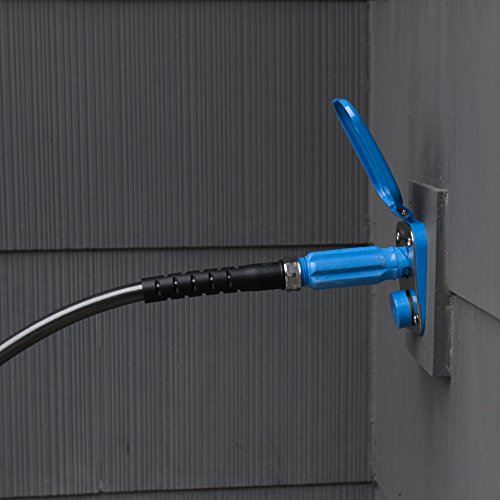

So I have lived in the same 1886 New England farmhouse with an attached barn for the last 25 years. One of the things I wrestle with on an annual basis is the internal and external water pipes that the prior owner(s) had installed. This system is very difficult to drain for the winter and I have replaced almost every run with the exception of an external hose bib that runs up the North side of the barn. For years I have procrastinated in installing the pipe on a through-wall basis. Just never got around to it, until I saw the Aquor V1 House Hydrant.
Aquor V1 House Hydrant Freeze Proof Faucet
But the opportunity to review the Aquor V1 House Hydrant was a chance to cure a long outstanding piping issue and to review and test out this unique freeze-proof outdoor faucet system.
The first time I picked up the shipping box, I was surprised with just how heavy the device was. I was immediately impressed by the Aquor packaging.
Aquor encloses its V1 House Hydrant in packaging that rivals Apple and Microsoft products’ packaging.
The main box contained custom formed foam inserts that guarantee the product arrives safely. The package and its contents can be seen in Figure#1.
The package contains the House Hydrant body, an adapter that fits on the end of the hose and plugs into the House Hydrant, a set of mounting screws and plastic plugs a face plate with a closing door, and a template to use for the installation of the through-wall hydrant. A second box included an additional adapter along with a gender changer for the hose end.
The Aquor House Hydrant V1 product is impressive to say the least. The housing is heavy stainless steel and extremely well fabricated. The welding that joins the housing to the front flange is literally beautifully fabricated. I have included a close-up picture of the joint weld in Figure #2, below:
Fit and Finish
Aquor pays attention to details and even the face plate door comes with a layer of scratch protection film on the plastic components. Speaking of the face plate, it is the part of the Aquor V1 House Hydrant to that ensures the system drains of water from the barrel of the hydrant body. The face plate has a taper that creates from the bottom to the top of the face plate that creates an incline of the body when attached to a vertical surface. When the adapter is pulled out of the House Hydrant, any residual water in the body drains out the front of the face plate. Figure #3 shows the face plate taper.
The adapter that goes on the end of the hose is a fabricated from DuPont Delrin and contains an integral check valve to prevent back flow from the hose into the domestic water system. The O-Rings on the adapter are extremely high quality and made from DuPont Viton flouroelastomer. These critical seals will not weather or wear out prematurely.
Unique On / Off Action
The water flow in the Aquor V1 House Hydrant system is enabled by putting the adapter into the hydrant housing and twisting the adapter until it seats into the housing. This action pushes a long rod to open a valve at the rear of the hydrant that is well inside the thermal envelope of the house. This system is purely an on-off hydrant. With the components that I reviewed, the water flow regulation must be done by the watering hose attachments.
Aquor does not ignore the instances where the home owner needs to fill a bucket or wants to control the water at the hydrant. Although it was not enclosed in the hydrant that I reviewed, Aquor sells a removable faucet that fits into the house hydrant, allowing local control of the water at the hydrant.
Integral Vacuum Breaker
Figure #4 shows the Aquor Removable Faucet that contains a ball valve to regulate the water flow. Note that the removable faucet is shown on an Aquor V2 House Hydrant – the only difference is the integral vacuum breaker on the face plate where code requires such a device.
So after examining the Aquor V1 House Hydrant, I was ready to install it in the side of the barn. I needed to install a small reverse piece of siding to create a flat and vertical surface in which to drill the hole in the exterior wall. A simple 1 ½ inch hole was all it took to be able to install the hydrant.
You know something is great when it looks great. The Aquor device does not disappoint.
The finished installation is shown in Figure #5 and Figure #6.
Cost
The Aquor V1 House Hydrant sells for $89.99 online here: Aquor V1 House Hydrant
